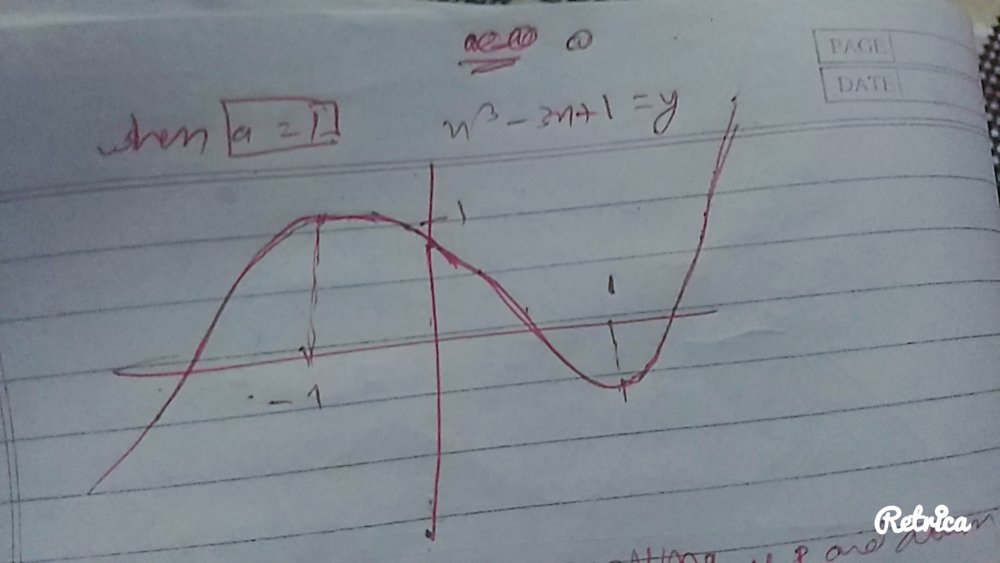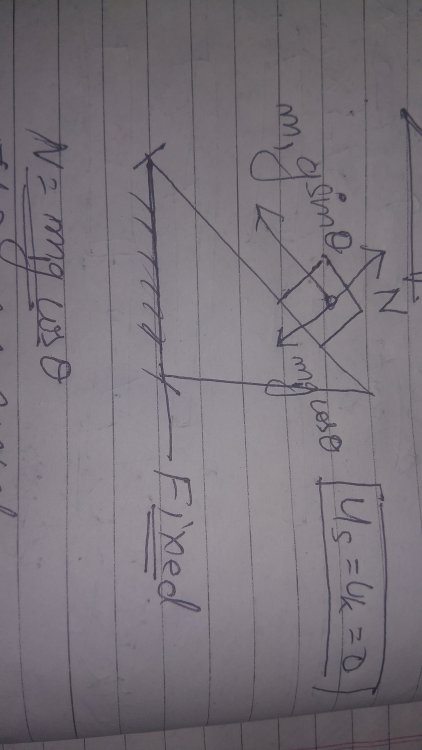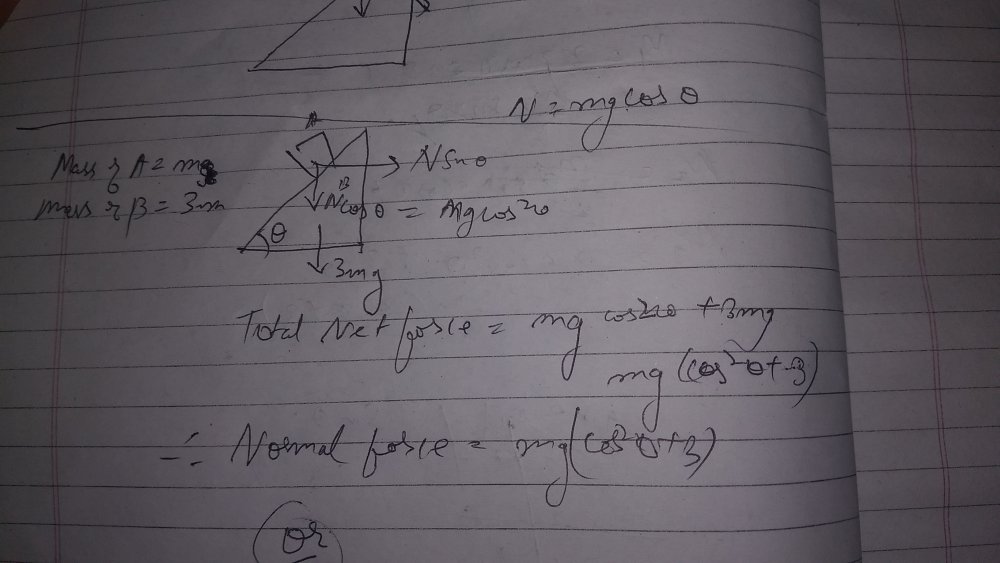

Shahroze
Members-
Posts
23 -
Joined
-
Last visited
Content Type
Profiles
Forums
Events
Everything posted by Shahroze
-
Can u explain more please?
-
-
Well first i calculated the work done by the gas in left compartment which was nRT ln( 2/(1+n)) and then by 2nd compartment which is nRT ln(2n/(1+n)^2) so total work is the sum of two which is nRT ln(4n/(1+n)^2) but the answer is inverse of it that is nRT ln((1+n)^2/4n) plz help
-
A piston can freely move inside a horizontal cylinder. Initially thr piston separates the cylinder in two parts of equal volume V and pressure P and temperature T. What work has to be done to increase the volume n times that of other ISOTHERMALLY?
-
Does the constant in a polynomial equation f(x) moves it up and down or does it does something more to the graph. Ex x^2 + 3x + a = f(x)
-
Oh yes sorry i didn't understood u yes the graph should move up and down as the points - 1 and 1 are fixing the graph's turning point. If x be very large then y will also be large as it will meet the line of graph will be a slightly straight line. If a = 0 and x= 0 then y will be zero. Am i going the right direction please check my sketch! When i add postive value of a then the graph is moving up! Oh.. now i got the logic so do u mean that the extreme values of a should be such that the graph lies between fig1 and fig2 . Oh i am not able to upload the images because of file size but now i understood that we should take those value of a such that graph become such that the turning point touches 1 and -1 and not beyond that as the roots will then become imaginary. So is the value of a for the above case -2<a<2 ??
-
I know a bit about curve sketching only! So please can u explain more. I know that graph will turn at -1 and then 1.
-
The set of values of a for which the equation x^3 - 3x + a has one negative and two positive roots is ? I know that a>0 and i also know that the turning point of the graph is at x=-1 and x = 1 but how to proceed further??
-
What have i not mentioned?. I have clearly mentioned all the forces on the wedge and the components. Is it not clear to you?
-
-
-
Ohh i am so sorry i wrote 'block'. Sorry the wedge is fixed
-
Because of gravity. The component of gravitational Force along plane i.e gsin(theta)
-
No, the block is fixed. No it's not a homework. I am just curious and confused as well.
-
gsin(theta) horizontally or along the plane? I had read somewhere that acceleration of the block in vertical direction(not along the plane) should be sin^2(theta) if thats true then the force by the block in the vertical direction should be I am asking about the vertical acceleration not the Acceleration along the plane! I know acceleration along the plane should be gsin(theta)
-
Sorry for the bad handwriting but what if it is accelerating like i have shown in the figure. Shouldn't the normal force by the block must have a component in the downward direction such that the wedge and the block both apply a combined "thrust". Will there be any difference in normal force by ground and if so what will it be? Is the answer {m[block]cos^2(theta)+m[wedge]}g
-
I want to know what will be the acceleration of block in vertical and horizontal direction. Is it gsin^2(theta) and gsin(theta).cos(theta). If this is so then should the force exerted by the block on the wedge be mgsin^2(theta)? Please help i am very confused about the forces as well and why can't it be mgsin^2(theta)
-
What will be the normal force by the ground on the wedge?Am i doing correct please help and if not then what is wrong? Please guide.
-
In real life if a block slips (in contact always) on a wedge then which force is responsible to maintain the ratio i.e ay/ax = tan (theta). I mean to say that y direction has 'g' but what is in x direction? Theta= angle of inclination! I know if all the surfaces are frictionless and wedge is not fixed then the wedge and block both will slide so ax would be caused by a pseudo force but what about in real life where wedges don't slide?
-
Ok so my second approach is that the mass m2 will give a tension of 20N and the mass m1 will give a tension of 5N because it is supported by two strings. So is the overall tension in the string 25N. Now if i am correct then the net force will be 5N. Now am i correct?? Can i proceed further? I am really confused Ok so my second approach is that the mass m2 will give a tension of 20N and the mass m1 will give a tension of 5N because it is supported by two strings. So is the overall tension in the string 25N. Now if i am correct then the net force will be 5N. Now am i correct?? Can i proceed further? I am really confused
-
Can u tell me if i am going right if i say that the tension in the string is 20N and that 20N is cancelled by the other 20N force i.e F so the acceleration will be zero.








